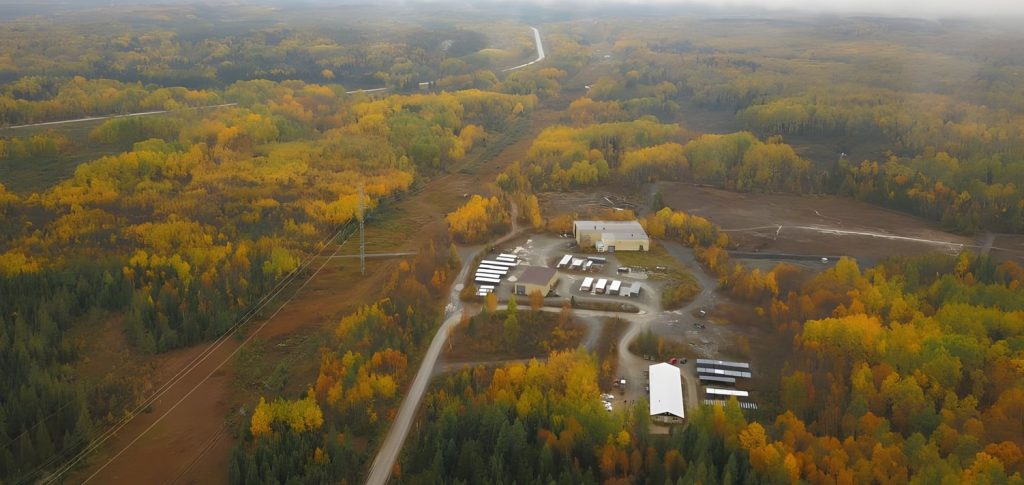Radisson Mining drills 137 g/t gold over 1 metre at O’Brien Project, Quebec

Radisson Mining Resources Inc. [TSXV-RDS; OTCQB-RMRDF] reported additional results from 11 diamond drill holes completed at its 100%-owned O’Brien gold project located in the Abitibi region of Quebec. These results are part of Radisson’s continuing and fully financed 35,000-metre drill program aimed at expanding the scope of gold mineralization and mineral resources at the project.
Gold mineralization at the O’Brien project is characterized by narrow and high-grade quartz-sulphide veins with prolific visible gold developed within rocks of the Piche group adjacent to the Larder Lake-Cadillac break (LLCB). The historic O’Brien mine produced over half a million ounces of gold from such veins at an average grade exceeding 15 g/t and today’s results demonstrate the same characteristic narrow and very high-grade vein intercepts.
Highlights: OB-24-320 intersected 137.00 g/t gold over one metre within a mineralized interval of 24.74 g/t Au over six metres and 7.60 g/t Au over three metres within a mineralized interval of 4.61 g/t Au over six metres.
OB-24-316 intersected 74.40 g/t Au over 1.3 metres within a mineralized interval of 42.31 g/t Au over 2.3 metres and 8.76 g/t Au over one metre within a mineralized interval of 3.50 g/t Au over 6.1 metres.
OB-24-317 intersected 20.20 g/t Au over one metre. OB-24-313 intersected 6.47 g/t Au over 3.7 metres.
Matt Manson, president and CEO, commented: “Today’s drill results further illustrate the type of vein intercepts, very-high grades and abundant visible gold that the O’Brien gold project is known for. These latest results are from predominantly trends 1 and 2, closer to the historic O’Brien mine, where we are seeing, perhaps, the best examples of the extensive high-grade near-vertical shoots that were so important for previous gold production.
“This is illustrated by the new drill hole OB-24-320 (137 g/t Au over one metre within a mineralized interval of 24.74 g/t Au over six metres) which is 290 metres downplunge on the same Trend 1 section and developed within the same Piche group S3p greywackes as the previously published drill hole OB-23-284 (241 g/t Au over one metre within 81.83 g/t Au over three metres). Our drilling to date has been aimed at in-filling gaps in the geological model in the 200- to 500-metre depth range.
“Current drilling includes deeper step-out holes below trends 0 and 1 and below the depth of the existing mineral resource. We now have two rigs at O’Brien and are approximately halfway through our fully funded 35,000-metre drill program of resource expansion and stepout exploration. We will be reporting additional drill results on a regular basis as they become available.”
The O’Brien gold project March 2023, mineral resource estimate (MRE) utilizes a 4.50 g/t Au bottom cut-off, a US$1,600/oz gold price, a minimum mining width of 1.2 metres, and a 40 g/t Au upper cap on composites.
Gold mineralizing quartz-sulphide veins at O’Brien occur within a thin band of interlayered mafic volcanic rocks, conglomerates and porphyric andesitic sills of the Piche group occurring adjacent to the east-west-oriented LLCB. Gold, along with pyrite and arsenopyrite, is typically associated with shearing and a pervasive biotite alteration and developed within multiple Piche group lithologies and, occasionally, the hangingwall Pontiac metasedimentary rocks.
The project has estimated indicated mineral resources of 500,000 ounces (1.52 million tonnes at 10.26 g/t Au), with additional inferred mineral resources of 450,000 ounces (1.62 million tonnes at 8.64 g/t Au). Mineral resources that are not mineral reserves do not have demonstrated economic viability.
Current exploration is focused on delineating well developed vein mineralization to the east of the historic mine, with additional high-grade shoots becoming evident in the exploration data over what has been described as a series of repeating trends.
Today’s results are from 11 drill holes over 5,622 metres in trends 1, 2 and 3. Visible gold was observed in eight holes, including impressive examples in holes OB-24-320 and OB-24-317. Holes were drilled on northerly declinations at inclinations of between minus 50 and minus 75 degrees, providing a high angle of incidence with the southerly dip of the Piche group rocks and the vein mineralization. Each drill hole was targeted at gaps within the existing geological model, between depths of minus 200 and minus 500 metres where, on the basis of previous drilling, Mineral Resources were absent or of lower confidence.
Radisson is a gold exploration company focused on its 100%-owned O’Brien gold project, located in the Bousquet-Cadillac mining camp along the Larder-Lake-Cadillac break in Abitibi, Quebec.
